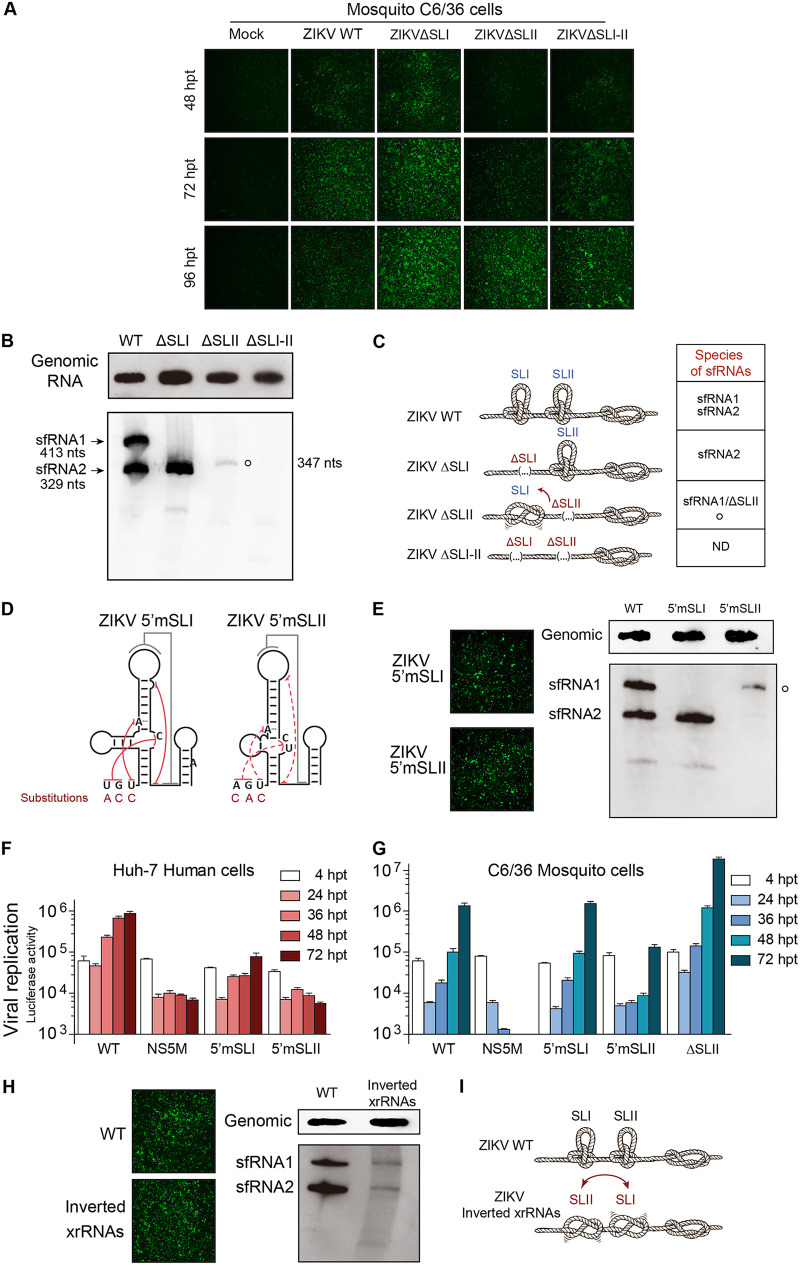FIG 4.
Dissecting the molecular determinants for ZIKV sfRNA accumulation. (A) Representative immunofluorescence showing replication and propagation of ZIKV WT and recombinants carrying deletions of each SL or both SLs. (B) SLII plays a central role in ZIKV sfRNA generation. Shown are Northern blots detecting genomic RNA (top) and sfRNAs (bottom) from infected mosquito cells with the indicated recombinant ZIKVs. The size and mobility of different sfRNA species are indicated on the left (sfRNA1 and -2). An sfRNA of 347 nucleotides in length generated by a ZIKV with SLII deletion (empty circle) is indicated on the right. (C) Illustrative representation of the SLs as knots and the species of sfRNAs produced by each virus. (D) Destabilization of SL structures alters sfRNA generation. Representation of mutants ZIKV5′mSLI and ZIKV5′mSLII, indicating the location and nucleotide substitution in each case. (E) (Left) Replication of transfected ZIKV5′mSLI and ZIKV5′mSLII RNAs in C6/36 cells shown by immunofluorescence. (Right) sfRNA pattern produced by ZIKV WT, ZIKV5′mSLI, and ZIKV5′mSLII, as indicated. The empty circle indicates the sfRNA produced by the ZIKV5′mSLII of 413 nucleotides. (F and G) Replication of ZIKVAr-R carrying the 5′mSLI and 5′mSLII mutations in human and mosquito cells, as indicated in each case, was assessed by measuring luciferase activity as a function of time. The luciferase values are means ± standard deviations from a representative experiment (three independent experiments were performed). (H) (Left) Replication of ZIKVAr WT or ZIKVAr xrRNA inverted mutant at 3 and 4 days posttransfection, shown by immunofluorescence. (Right) Northern blots showing genomic RNA (top) and sfRNAs (bottom) from infected mosquito cells with the indicated recombinant ZIKVs (WT or xrRNAs inverted mutant). (I) Illustrative representation of xrRNAs for the WT and mutant, highlighting the relevance of the location and cooperativity between the two SLs.

